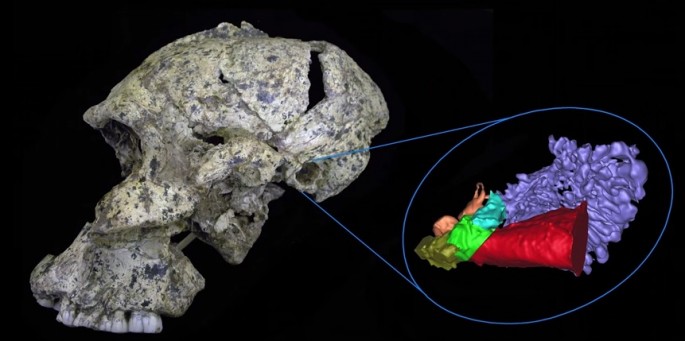New research reveals how human ancestors evolved with their hearing abilities, that are obtained from evidence of human fossils dating back to 2 million years.
Lead author of the study Rolf Quam from Binghamton University and his team discovered crucial evidence from several fossils that belonged to several hominin individuals from the Sterkfontein and Swartkrans sites in South Africa where they reconstructed a sensory perception model to further understand how ancient humans hear.
During this new study, the team used CT scans and computer simulations to examine the anatomy of the internal ear where the results are suggesting the early hominin species of the Australopithecus africanus and Paranthropus robustus apparently possessed hearing abilities comparable to a chimpanzee with some slight differences, some 2 milion years ago.
Humans possess distinct hearing abilities compared to most primates such as chimps where humans can hear a wider range of frequencies, shifting from 1.0 between 6.00 kilohertz. In this same frequency range however, chimpanzees and mostly other primates can lose their hearing sensitivity since this range encompasses sounds the spoken language of humans.
Quad noted that hearing patterns of humans and chimps that are showed in audiograms are distinct from each other upon further examination and measurements under laboratory conditions, shedding more light how humans adapted and evolved their hearing patterns when it first emerged during human evolutionary history.
In the recovered fossils from South Africa, this region possessed a maximum hearing sensitivity of higher frequencies compared to chimps where the early hominins presented better hearing abilities than chimps or modern humans of 1.0 to 3.0 kilohertz.
Scientists reveal that this auditory pattern is also particularly conducive and more favorable for dwelling in a savanna environment. Apparently, in more open, sprawling habitats, sound waves do not travel as far unlike in the rainforest, which means that short communication ranges are more ideal on the savanna.
This new study is published in the journal Science Advances.



























